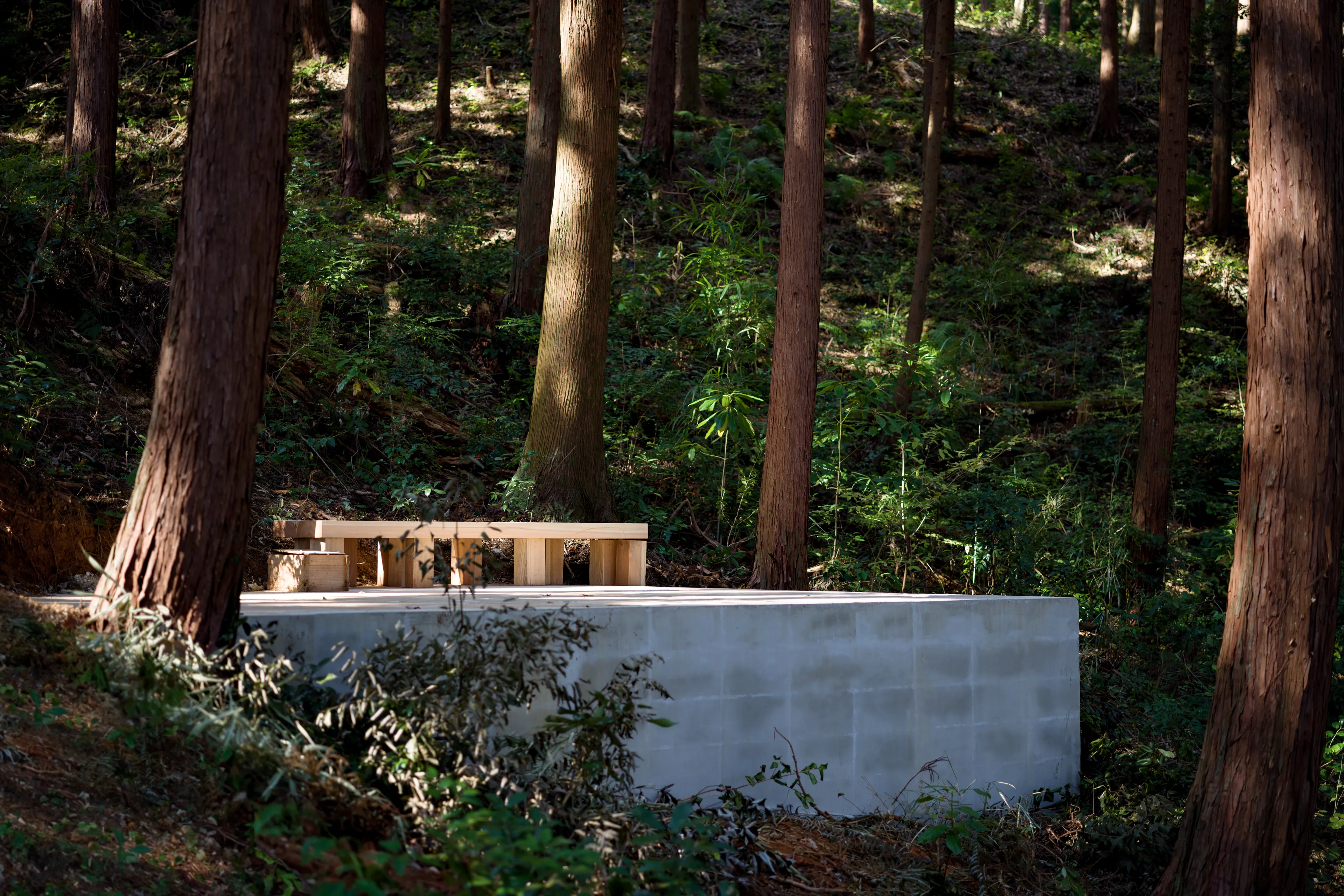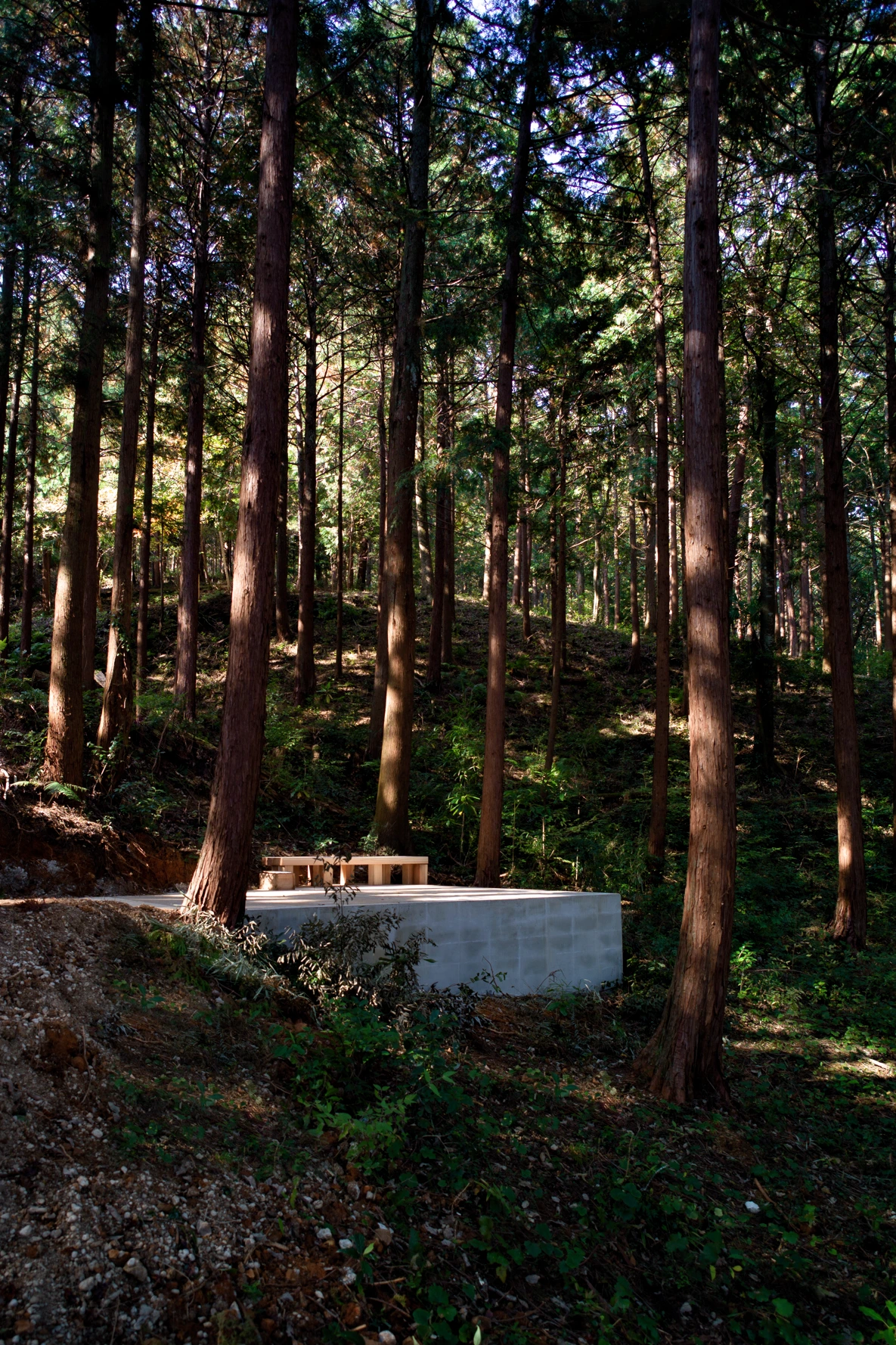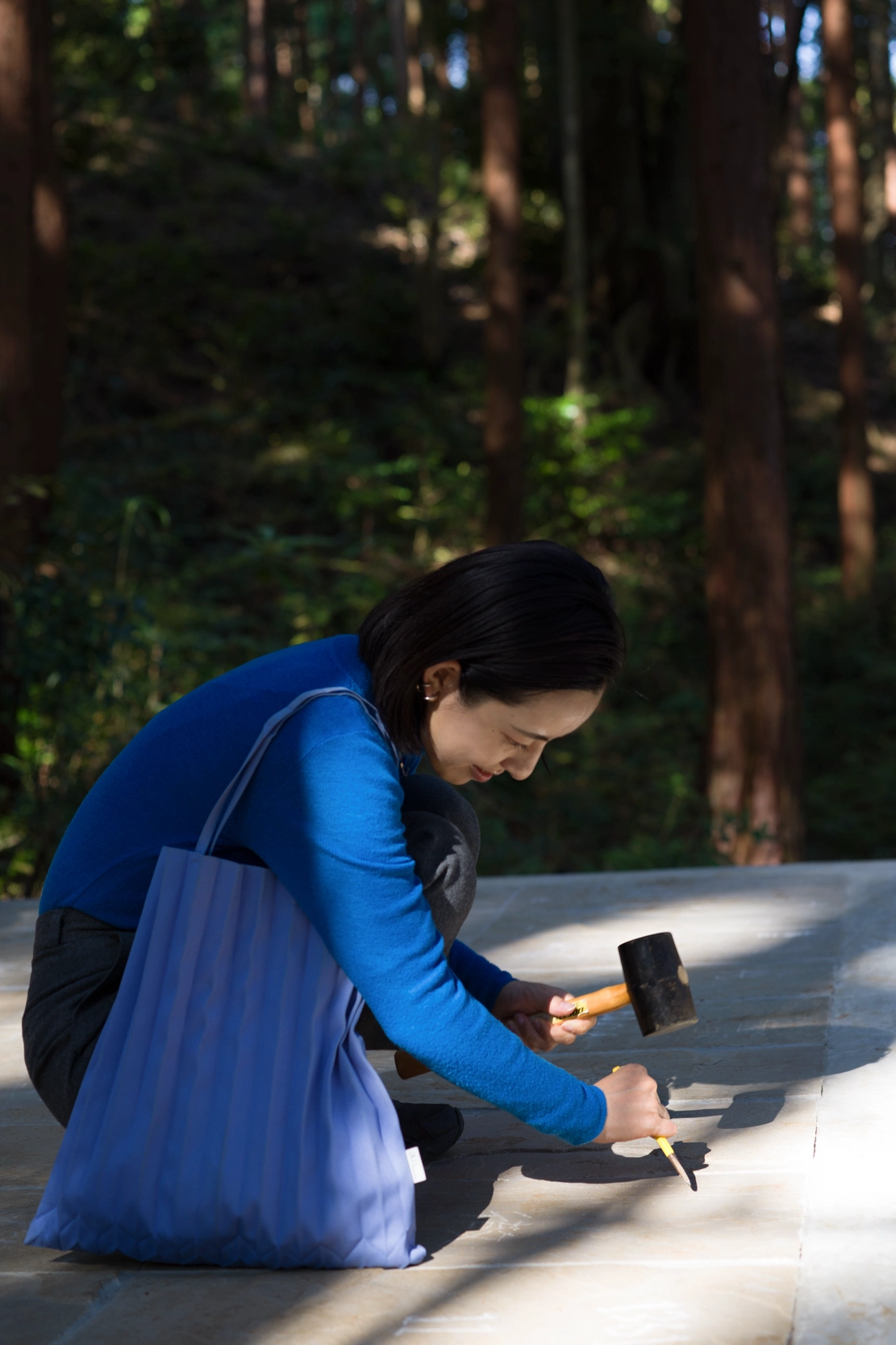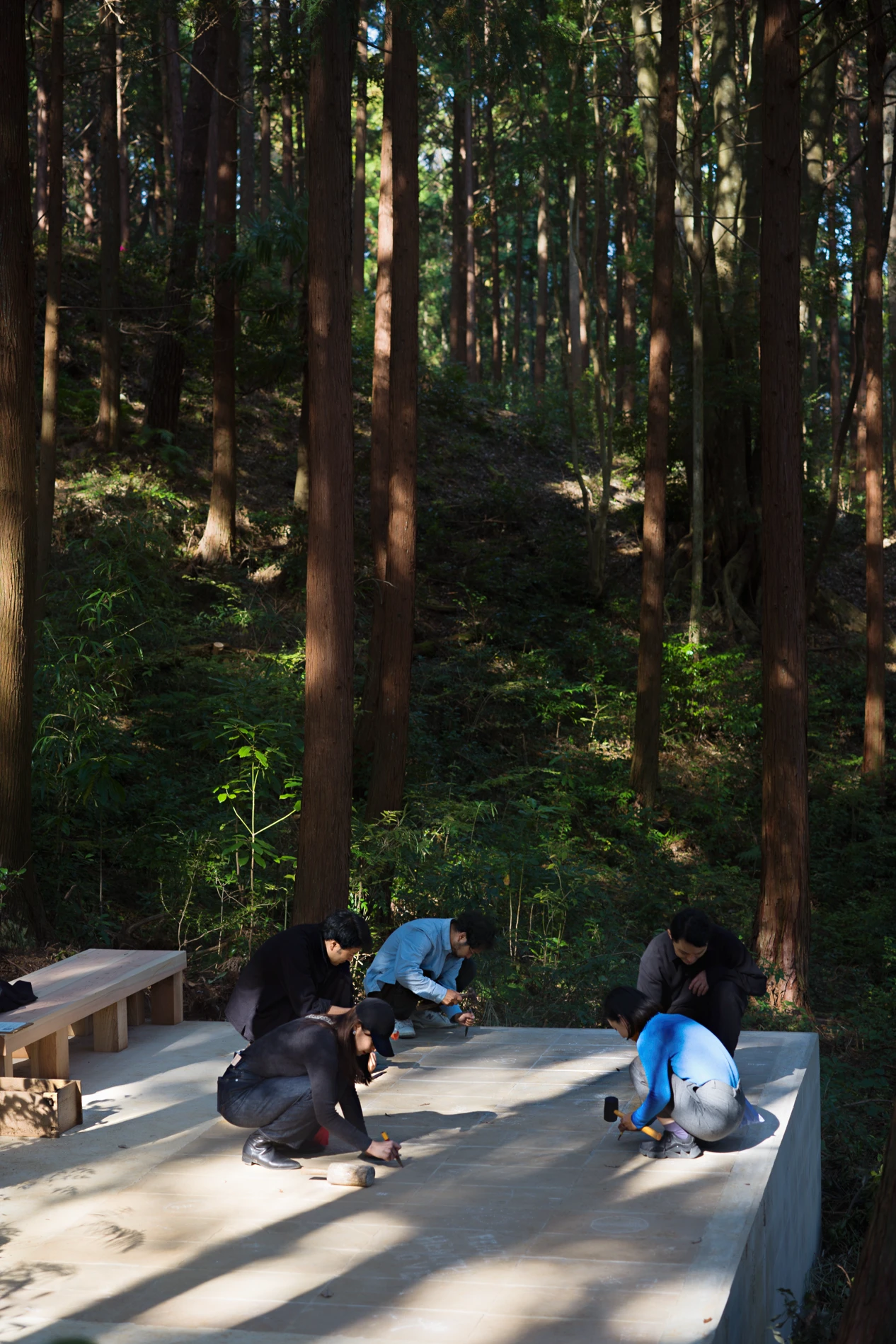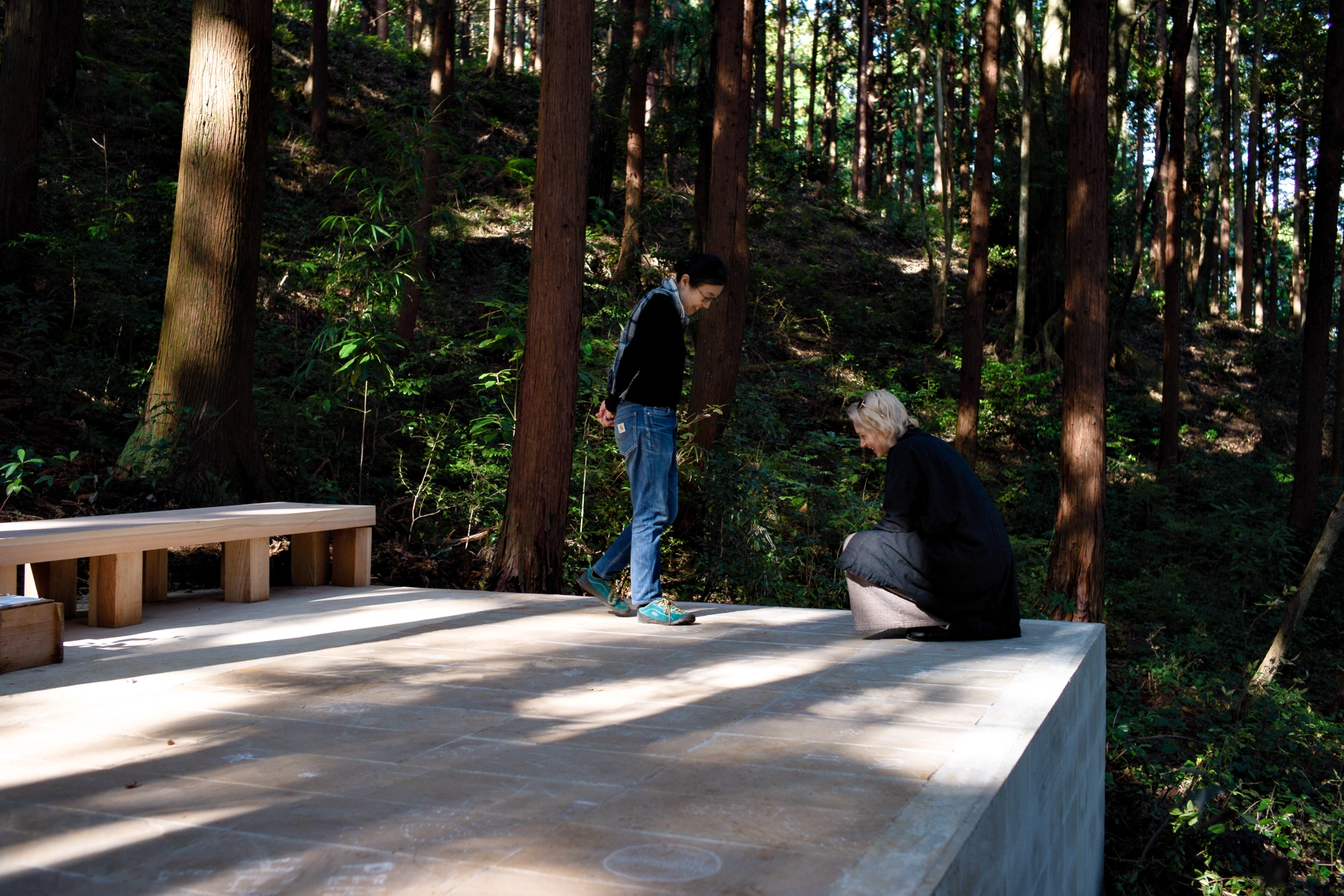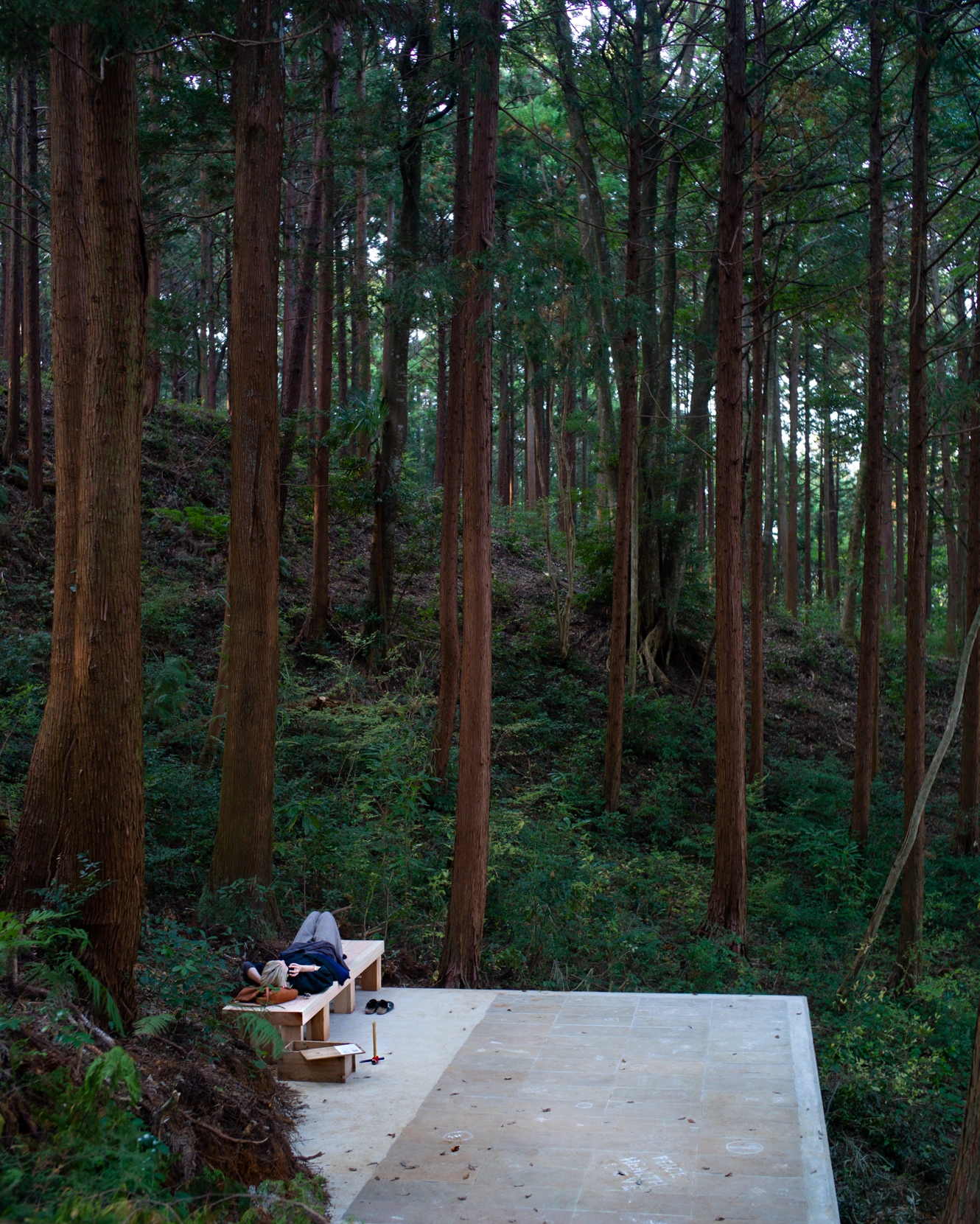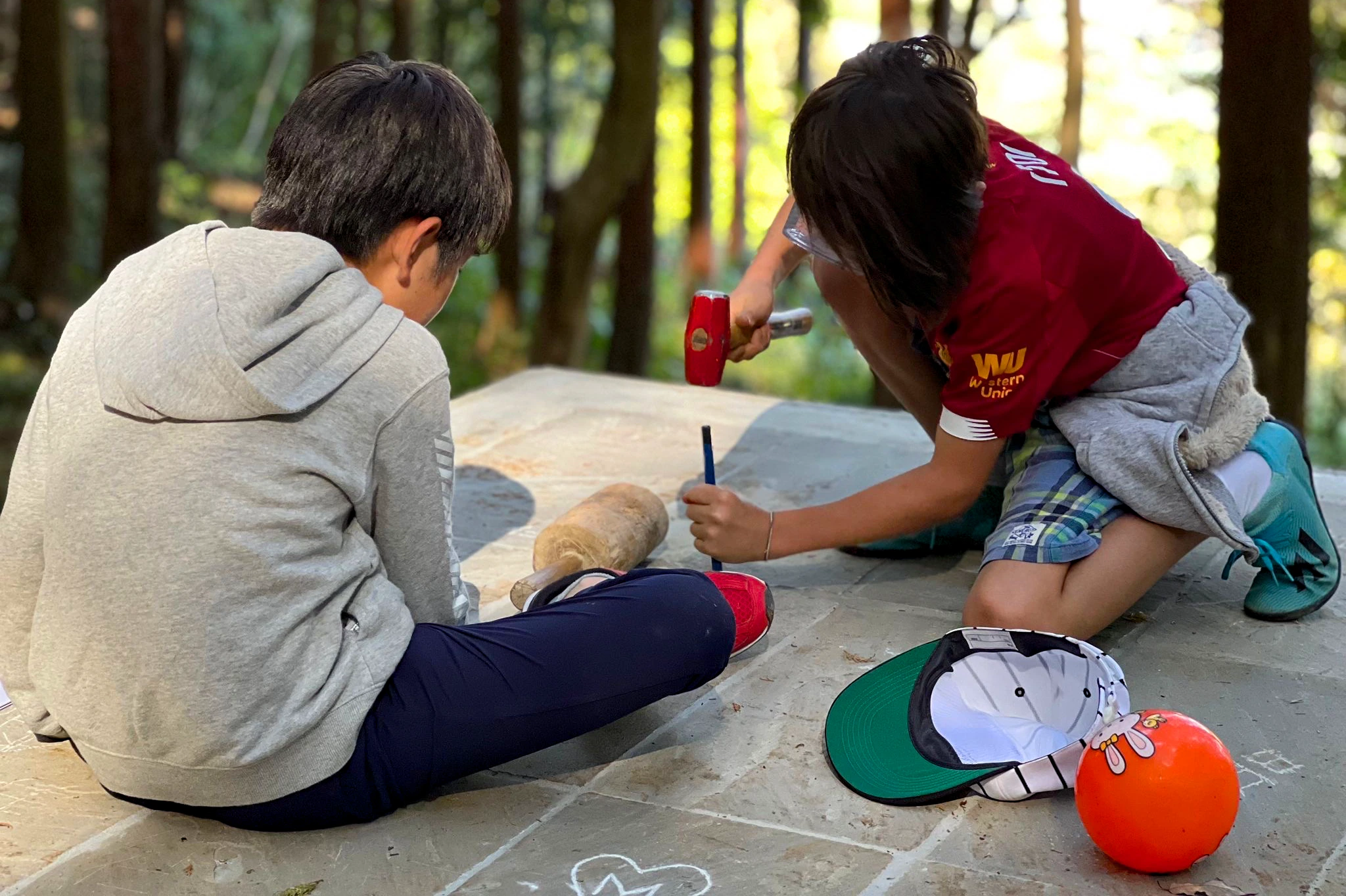


Liminality
Liminality in Kamiyama is a place abstracted from its surroundings — an in-between space, out of context, and without inherent meaning. It is a transitional, empty, liminal space — a non-place waiting for people to project their own meaning onto it. It alludes to the human desire to leave traces of presence, a sentiment often felt when visiting new environments manifested in carving marks on trees, throwing coins into fountains, and hoping to return someday.
Liminality includes a toolbox with carving tools and a bench offering a beautiful view of Kamiyama Onsen. It serves as an open invitation — free of any pressure to participate — to spend time in the peaceful surroundings of the Kamiyama forest at Oawa Mountain and, if inspired, leave traces of presence set in stone.
The term liminality describes the psychological process of crossing boundaries and traversing borders. It is a state of in-betweenness, characterized by a sense of uncertainty and possibility that arises when we have left behind one state but have not yet fully established ourselves in another. The term was coined by Arnold Van Gennep in 1908, in his seminal work “Rites of Passage,” in which he observed that many rituals across cultures serve to move individuals from one status or social circumstance to another.
Van Gennep was the first anthropologist to identify the regularity of rituals associated with transitional stages in human life. He delineated four key types of liminal experiences: physical movements, changes in social status, changes in situations, and the passage of time, which accompany every change of place, social position, state, and age. He noted that ritual ceremonies associated with life’s landmarks differ only in detail from one culture to another and are, essentially, universal.
Liminality can refer to the physical, emotional, and metaphorical transitions that occur throughout life. The liminal period is a time of passage from what an individual (or entity) was to what they will become. It is a transformative and often challenging period of ambiguity, marking a critical juncture in personal development and cultural evolution.
Art in public space
fot. Masataka Namazu
Concrete platform: 8x4m
Stone surface: 5.5x2m
Timber bench
Tool box with carving chisels
Oawa Mountain, Kamiyama, Tokushima, Japan, 2022
References:
Liminality
Art in public space
fot. Masataka Namazu
Oawa Mountain, Kamiyama, Tokushima, Japan, 2022
Concrete platform: 8x4m
Stone surface: 5.5x2m
Timber bench
Tool box with carving chisels
Liminality in Kamiyama is a place abstracted from its surroundings—an in-between space, out of context, and without inherent meaning. It is a transitional, empty, liminal space—a non-place waiting for people to project their own meaning onto it. It alludes to the human desire to leave traces of presence, a sentiment often felt when visiting new environments manifested in carving marks on trees, throwing coins into fountains, and hoping to return someday.
Liminality includes a toolbox with carving tools and a bench offering a beautiful view of Kamiyama Onsen. It serves as an open invitation — free of any pressure to participate — to spend time in the peaceful surroundings of the Kamiyama forest at Oawa Mountain and, if inspired, leave traces of presence set in stone.
The term liminality describes the psychological process of crossing boundaries and traversing borders. It is a state of in-betweenness, characterized by a sense of uncertainty and possibility that arises when we have left behind one state but have not yet fully established ourselves in another. The term was coined by Arnold Van Gennep in 1908, in his seminal work “Rites of Passage,” in which he observed that many rituals across cultures serve to move individuals from one status or social circumstance to another.
Van Gennep was the first anthropologist to identify the regularity of rituals associated with transitional stages in human life. He delineated four key types of liminal experiences: physical movements, changes in social status, changes in situations, and the passage of time, which accompany every change of place, social position, state, and age. He noted that ritual ceremonies associated with life’s landmarks differ only in detail from one culture to another and are, essentially, universal.
Liminality can refer to the physical, emotional, and metaphorical transitions that occur throughout life. The liminal period is a time of passage from what an individual (or entity) was to what they will become. It is a transformative and often challenging period of ambiguity, marking a critical juncture in personal development and cultural evolution.
